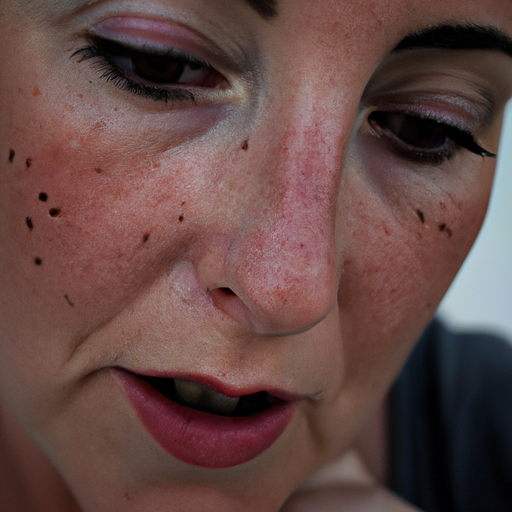Dry skin, medically known as xerosis, is a common condition that affects many people worldwide. It is characterized by a lack of appropriate moisture in the most superficial layer of the skin, the epidermis. While dry skin can affect any part of the body, it is most commonly observed on the hands, arms, and legs. As a medical professional, I believe it’s essential to understand the causes, diagnosis, and treatment of this condition to manage it effectively.
Dry skin can be caused by various factors. Environmental conditions such as cold or dry weather, low humidity, and excessive sun exposure can strip the skin of its natural moisture. Other factors include aging, certain medications, and underlying medical conditions like diabetes, hypothyroidism, malnutrition, and dermatitis. It’s also worth noting that excessive washing and use of harsh soaps can disrupt the skin’s natural oil balance, leading to dryness.
Diagnosing dry skin is typically straightforward. The skin appears rough, scaly, or flaky and may feel tight or itchy. In severe cases, the skin may develop deep cracks that can bleed. However, it’s crucial to consult with a healthcare provider to rule out other skin conditions that may mimic dry skin symptoms such as psoriasis or eczema.
A comprehensive physical examination and review of your medical history are usually sufficient for diagnosing dry skin. In some cases, your doctor may perform specific tests such as a skin biopsy or blood tests to rule out underlying conditions causing your dry skin.
Once diagnosed, the treatment of dry skin primarily involves replenishing lost moisture and protecting the skin from further moisture loss. Here are some strategies that can help:
1. Moisturize: Apply a moisturizer immediately after bathing and throughout the day as needed. Look for products containing ingredients like hyaluronic acid, glycerin, lactic acid, or lanolin that help attract and lock in moisture.
2. Use gentle, fragrance-free cleansers: Avoid soaps and body washes with fragrances, alcohol, and other harsh chemicals that can strip your skin of its natural oils.
3. Limit water exposure: Keep your showers or baths short, and use warm rather than hot water. Prolonged exposure to water, especially hot water, can strip the skin of its natural oils.
4. Use a humidifier: This can be especially helpful in dry or cold weather to add moisture to the air and help prevent your skin from drying out.
5. Stay hydrated: Drinking plenty of water can help keep your skin hydrated from the inside out.
If your dry skin persists despite these measures, or if it interferes with your daily activities or causes you discomfort, it’s important to seek medical attention. Your doctor may prescribe a medicated cream or ointment, or recommend other treatments based on the underlying cause of your dry skin.
In conclusion, while dry skin is a common condition, it should not be overlooked as it can significantly impact an individual’s quality of life. Understanding the causes and symptoms of dry skin is the first step towards effective management. With the right care and treatment, most people can achieve relief from dry skin and improve their skin’s health and appearance. Remember, every person’s skin is unique, and what works for one person may not work for another. Therefore, it’s crucial to consult with a healthcare provider to develop a personalized skincare routine that suits your specific needs.



